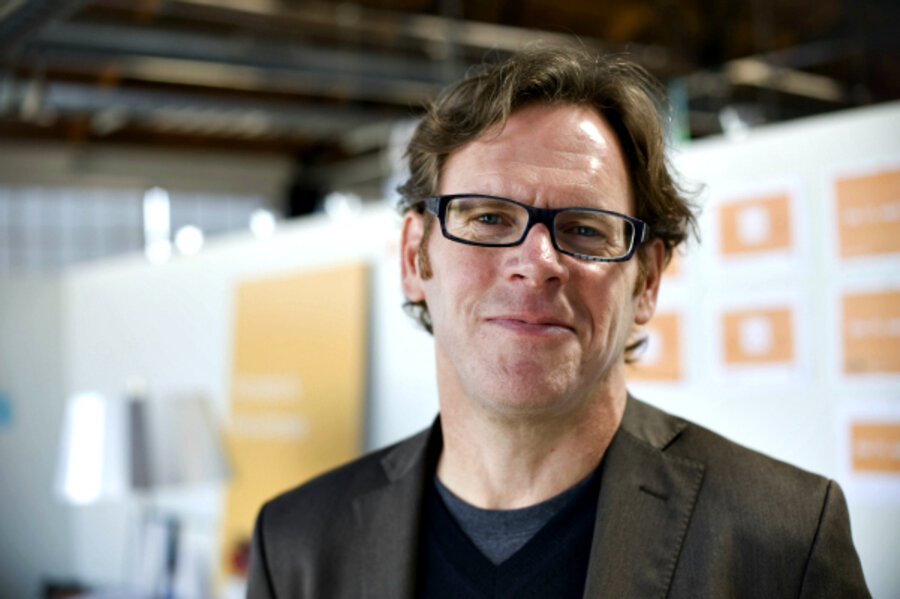This '1 percent' helps nonprofits solve architectural problems
Loading...
Inside the sleek steel and cement workshop of Bikes Not Bombs in Boston's Jamaica Plain neighborhood, at-risk youths recondition bicycles before sending them on for use in developing countries.
Halfway across the country at the University of Minnesota Amplatz Children's Hospital, a “showcase suite” shows how a child's hospital room can be made less intimidating and more comfortable.
The "1 percent" built the bike-repair workshop. The "1 percent" also built the hospital room.
No, not the 1 percent that’s been the object of Occupy Wall Street protests. This is "The 1%" program of Public Architecture. Based in San Francisco, the
organization connects nonprofit groups in need of design assistance with architecture or design firms. The name for the group comes from the idea that if firms across the country donate just 1 percent of their time each year to charitable work it would equal 5 million hours.
“In a moment of ambitious insanity, I decided to start a nonprofit,” says John Peterson, the founder and president of The 1%.
Mr. Peterson previously ran a small private architecture firm that specialized primarily in residential projects. But as his firm began taking on projects that forced him to think about its role in various kinds of neighborhoods, he saw an opportunity to help underserved communities.
Most architecture and design firms, he found, were unfamiliar with the idea of doing pro bono work. Initially, holding design competitions was the only way to get firms to participate.
“But competition [projects] rarely get built,” says Amy Ress, project manager for The 1% program. “We wanted to do projects that would get built.”
Mr. Peterson launched The 1% in 2001. More than 10 years later, more than 1,000 architecture and design firms (between 3 percent and 5 percent of all American architectural firms) and 600 nonprofit organizations are participating. About 18 new firms join each month, he says.
One of the earliest design ideas was The Station, which would serve as a gathering point for day laborers. Day laborers normally must hang out at spaces meant for other uses, such as gas stations and parking lots. Today a handful of official Day Labor centers exist across the country.
The Station, a flexible, pavilion-like structure could also serve as an employment center and classroom. While it’s not yet in use, the project is an example of how design can push discussion about social issues, according to the Program for Public Architecture website.
More outreach to architectural firms is needed to increase the number of pro bono participants , Ms. Ress says.
“If they [architectural firms] can’t keep the lights on and pay their staffs, they can’t do it,” Ress says. So The 1% needs to educate architect and design firms on how pro bono work can be a healthy part of doing business.
Firms should think of donating their time as an investment, Ress says. Nonprofits often have influential people on their boards. The chance to present work to a group of influential people is an opportunity, she says. One pro bono project can lead to 10 paying projects because of the connections made. And, in turn, new paying projects mean the firm will be able to afford to do yet more pro bono work, she says.
Donating time also permits firms to reach markets outside their usual business circle. And it allows younger firms to test new designs and technologies as well.
Only nonprofit groups based in the United States can participate in The 1%, though their projects can be anywhere. For example, San Francisco-based Room to Read builds libraries and school in Africa. It came to The 1% to find a design firm to help it become more energy and resource efficient.
A few firms in Canada and other nations use The 1% to share their pro bono work ideas though they haven’t yet joined in and matched up with nonprofit groups.
Financial support for The 1% comes from a mix of corporate and private foundations, according to The 1%. These groups include the National Endowment for the Arts, Shaw Contract Group, Teknion, and Formica. Contributions also come from firms such as Gensler, Cannon, and McCall Design Group.
From its start, The 1% has always asked the questions "How do we participate in the community? What is our responsibility in the community?” Peterson says.
• Sign up to receive a weekly selection of practical and inspiring Change Agent articles by clicking here.







